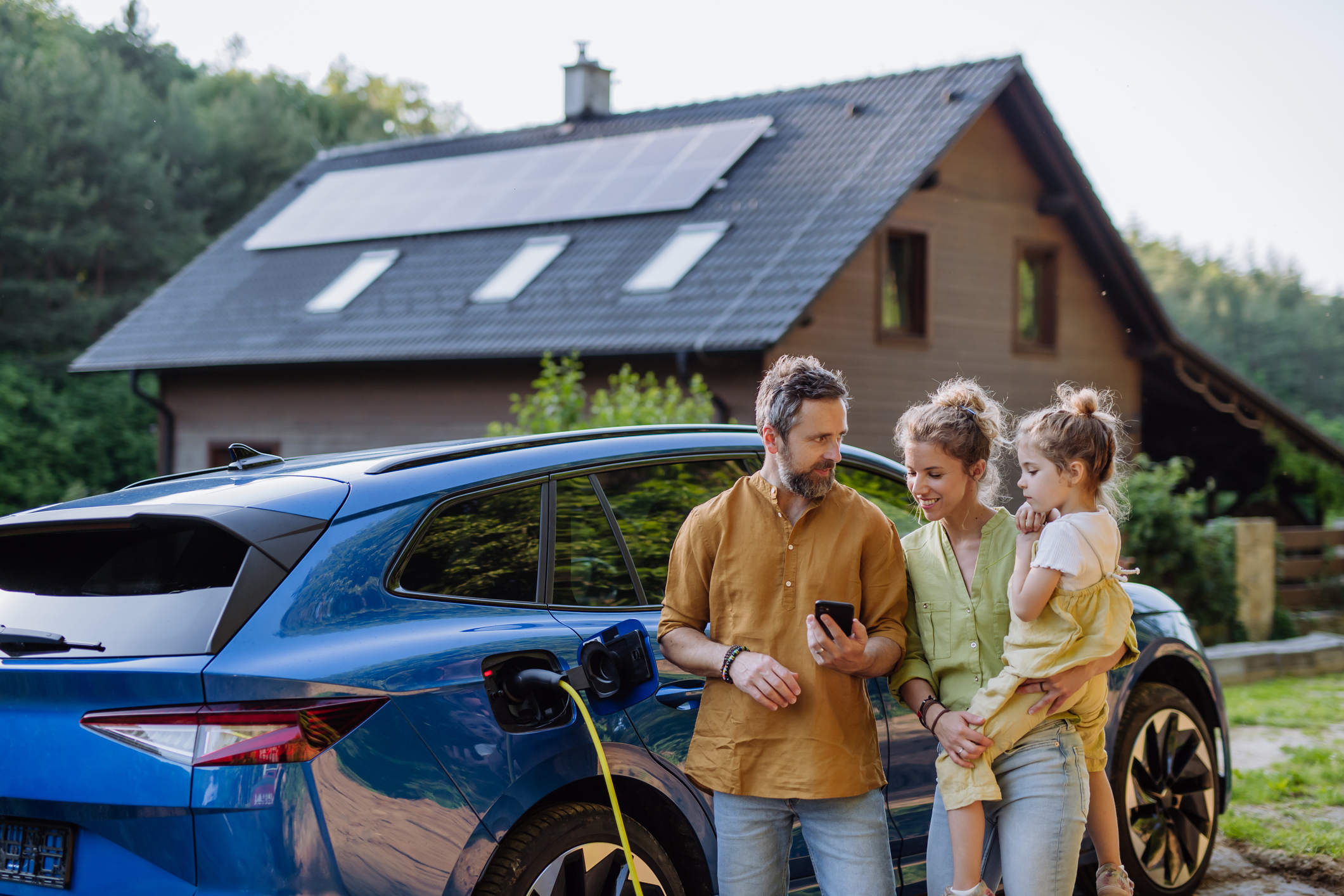20 Ways You Can Reduce Your Carbon Footprint

Mar 28, 2025
From the food you eat, to the clothes you wear, and how you get around, nearly every small action you take throughout your daily life affects your personal carbon footprint. Luckily, there are plenty of steps you can take to reduce your carbon footprint and help make a positive impact on our environment and climate. Here are 20 ways you can reduce your carbon footprint:
1. Reduce your energy usage
The electricity that comes to your home likely includes dirty fossil fuels, such as coal and gas. This means that the energy you use in your home makes up a big part of your personal carbon footprint—and reducing your energy usage is one of the most effective ways you can help shrink it. Try taking simple steps to save energy throughout your home, such as using cold water for your laundry, hanging your laundry to dry instead of using the dryer, turning off the heated drying setting on your dishwasher, and making sure you turn off the lights every time you leave a room. Check out this blog post for more energy-saving tips!
2. Adjust your thermostat
For an effective way to reduce your electricity usage (while also saving money on your electric bills), be smart with your thermostat. Don’t use more heat or AC than you need to. Take advantage of the sun to help warm up your home on chilly days and the natural breeze to cool your home on warmer days. When it comes to adjusting the thermostat, the Department of Energy recommends adjusting the temperature by 4°F when you’re asleep and 7°F when you’re out of the house to save energy—and money.
3. Install a smart thermostat
Smart thermostats make it even easier to manage your home’s energy usage. By allowing you to adjust the temperature from your smartphone and automatically self-adjusting based on the current weather, smart thermostats can help keep you comfortable when you’re home and save energy when you’re not.
4. Switch to energy-efficient lighting
Did you know that LED light bulbs use at least 75% less energy and last 25 times longer than incandescents? Swapping out your incandescent bulbs for LED bulbs is a super simple step that can save a ton of energy and money over time.

5. Switch to more eco-friendly appliances
Many of us have appliances in our homes and garages that are gas-powered, inefficient, or otherwise environmentally unfriendly. When your appliance is ready to be replaced, upgrade to an electric or ENERGY STAR-certified appliance to help reduce emissions and save energy. Try switching to an electric stove, an Energy Star-certified dishwasher, a heat pump water heater, or even an electric lawn mower to further reduce your carbon footprint.
6. Turn down your water heater
According to the Department of Energy, water heating accounts for about 18% of the average electricity bill—making it the second largest energy expense in your home. Some manufacturers set water heaters at 140ºF, but most homes only require them to be set at the warm setting (120ºF). Turning down the temperature of your water heater to 120ºF is an easy way you can help reduce your energy consumption (learn more here).
7. Reduce your transportation footprint
The transportation sector is responsible for 28% of U.S. greenhouse gas emissions—which makes this a huge potential area of improvement. Try taking steps to reduce your personal transportation footprint by walking or biking instead of driving, taking public transportation, carpooling with others, opting for virtual meetings and events, or driving less in general.
8. Switch to an electric car
If you currently drive a gas-powered car, switching to an electric vehicle is one of the most impactful ways you can reduce your transportation footprint. Learn more about the many benefits of switching to an electric car, and check out some of the electric cars and hybrid cars on the market!

9. Take fewer airplane flights
It’s no secret that the airline industry is a large source of global CO2 emissions. Sometimes taking a flight is unavoidable, but try taking a train or bus instead whenever possible, and try flying less overall. You should also take direct flights whenever you can—direct flights cause fewer emissions, as the most emissions occur during takeoff and landing.
10. Reduce the amount of food you waste
Food waste is a serious environmental issue. When food is thrown away, it eventually goes to sit in a landfill, where it emits harmful methane gas. Be more diligent about cooking, food shopping, and eating leftovers to cut back the amount of food you throw away.
11. Start composting
Composting your food waste is a great way you can reduce harmful methane emissions and help fight climate change. Check out our blog post to learn more about how you can get started with composting—even if you live in an apartment!
12. Eat more plant-based foods
Reducing the amount of animal-based food products you consume (such as meat, dairy, and eggs) is a simple yet surprisingly effective way to reduce the carbon footprint of your food. Even giving up meat just one day a week can have a big impact! Learn more about how vegan and plant-based eating can help our planet in this blog post.
13. Buy local, seasonal produce—or grow your own!
Food that is out of season and not local can have a bigger footprint: It often requires more energy-intensive practices to grow, and the long-distance shipping creates more transportation emissions and requires more packaging. Not only does local, seasonal food have a smaller footprint—it also tastes better! You can also try out your own green thumb by growing produce in your garden or in planters.

14. Avoid buying brand new clothes
Fast fashion comes with many harmful effects on the environment. Shop at thrift or consignment stores to reduce fashion waste. If you do need to buy brand new clothes, try shopping from one of these sustainable clothing brands to reduce the negative impacts of your purchase.
15. Use less plastic
Single-use plastics pollute our oceans, are made from fossil fuels, and require energy to produce and recycle. Swap out single-use plastics for reusable options throughout all aspects of your life, such as reusable water bottles, grocery bags, coffee cups, and utensils. Check out these tips to help you reduce your plastic use and live plastic-free.
16. Use less water
It takes a surprising amount of energy to pump, heat, treat, and move water. Simple steps such as turning the faucet off when brushing your teeth, taking shorter showers, or installing a low-flow shower head can add up and save a lot of energy.
17. Go paperless
Using less paper not only helps save trees—it also conserves energy that is used to convert those trees into paper and transport paper products. Sign up for paperless billing and statements, opt for electronic versions of books or newspapers, or try reusable alternatives to paper towels and napkins.
18. Plant trees
Trees are a vital tool in our efforts to remove carbon dioxide from the air and curb climate change. Plant trees yourself in your yard, advocate to your local government to plant trees in your community, or plant trees through an organization such as Arbor Day Foundation.
19. Recycle properly
Recycling is an important way to reduce waste, but it’s only effective if you do it correctly. Check out our Recycling 101 guide for tips and helpful information.
20. Choose 100% clean energy for your home
One of the easiest and most impactful ways you can reduce your carbon footprint is by switching to 100% clean, pollution-free energy for your home. With CleanChoice Energy, signing up takes just 2 minutes, and all of the energy you use will be replenished on the grid with 100% renewable energy from wind and solar sources in your region.
Since 2012, CleanChoice customers have used more than 10 billion kWh of clean wind and solar power—which has had an environmental impact equivalent to preventing more than 8 billion pounds of coal from being burned, taking more than 1.6 million gas-powered cars off the road, or preserving more than 9 million acres of forest! Learn more about how you can sign up for clean energy today to help protect our planet for future generations.

Throughout all aspects of our lives, there are plenty of ways we can all make strides toward reducing our personal carbon footprint. Join us in the fight against climate change by taking these steps to make a positive impact on the environment and protect our planet for generations to come.
Stay in the know
Learn about clean energy, climate tips, special offers, and more
Success! You’ve been added to our mailing list.



